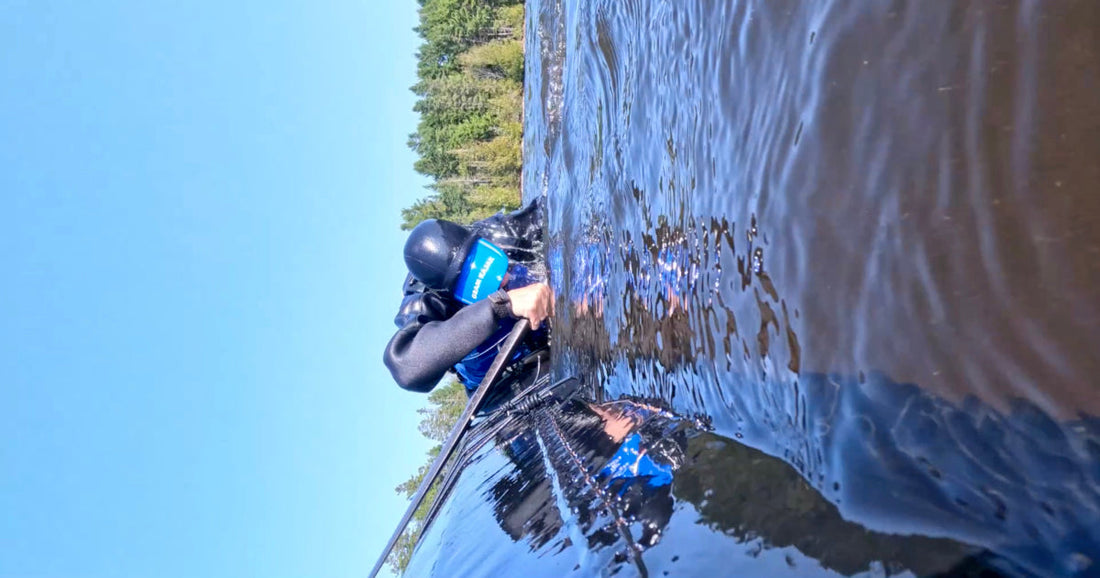
Greenland Paddle Information
Share
Greenland paddles are becoming more popular as users report experiencing less strain on their shoulders in comparison to "European" paddles, without sacrificing agility or speed.
The difference in paddling technique used for the narrow Greenland paddle results in less force being used in the initial catch phase of the stroke, and more power coming from the second half of the stroke, as the paddle moves past the hips, the entire blade of the paddle is submersed, and the body rotates. What this means for the paddler is that rather than the shoulders bearing the brunt of the work, the power of the stroke comes instead from the core muscles that rotate the body. Moreover, increasing the cadence of the stroke with a Greenland paddle is easy to do because of the low strain involved, and can allow speed to be maintained with less shoulder fatigue. With practice, additional advantages of the sleek design can be noticed in a reduced tendency for the paddle to 'catch' during complex maneuvers and rolls. Whether you are a novice kayaker or a seasoned pro, once you've tried Greenland, we believe you will never go back!
Choosing a Paddle Type
We carry two brands of Carbon fibre Greenland paddles: Gram Kajak and Gearlab Outdoors.
Greenland paddles by Lars Gram at Gram Kajak in Denmark come in models that differ by shoulder type and paddle width, as well as number of separate pieces. Choose marked shoulders (9000D) to know exactly where the loom of the paddle ends and the blade begins, or soft shoulders (9100D and 9200D) to get a smooth-feeling transition between loom and blade. The 9000D and 9100D paddles have a blade width of 82mm, while the 9200D has a blade width of 92mm, allowing for slightly more power in the stroke. All paddle models that end with a D are two-piece paddles that can be easily stowed on the deck to be used as a spare. Three-piece paddles (T) can fit in carry-on luggage, and the middle portion of the loom can be removed to make a shorter storm paddle. 9200D paddles are 650-700g while the 9100D are 550-600g.
Gearlab Kalleq paddles are shoulderless paddles with a 88mm-wide blade. The weight of the regular length paddle is approximately 700g. The loom on the kalleq is round, as opposed to the slightly oval-shaped loom on the Gram Kajak paddles.
While shoulderless paddles make sliding strokes (moving your hands across the full length of the paddle) effortless, shouldered paddles allow quick assessment of the centre point of the paddle. The difference in the loom shape is also an important consideration. The slight oval of the Gram Kajak paddles allows the paddle to fall naturally into a canted angle when the hands are opened up and the paddle is balanced on the thumbs, making for efficient paddling. Blade width changes the power that comes out of each paddle stroke, but also affects the ease at which the paddle blade can be held in rolls and maneuvers that require gripping of the blade. While the Gram Kajak 9100D is the narrowest blade of the carbon paddles sold here, the 9200D is the widest, and the Gearlab Kalleq falls somewhere in the middle.
Choosing a Paddle Size
When choosing the size of the Greenland paddle that's right for you, consider your height, torso length, and shoulder width, as well as the width of your kayak. To measure your torso, sit on a flat chair and measure the distance from the chair to the top of the shoulders. Roughly speaking, if this distance is 55cm, choose a 215cm paddle, if it is 65cm, choose a 220cm paddle, and if it is 70cm or above, choose a 224cm paddle. Adjust up if your kayak is very wide. For more information, refer to: https://gramkajak.com/choose-your-paddle/